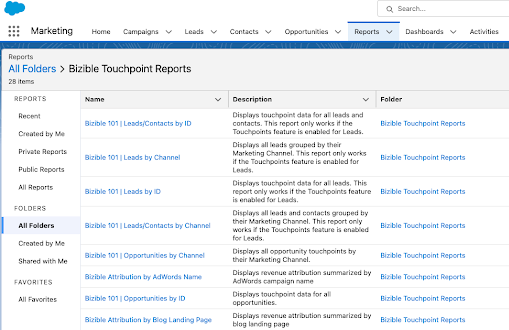While our most popular project in 2020 was automatically matching Salesforce Leads to Accounts, Q4 has been alllll about the “funnel.” Otherwise known as creating a Funnel History custom object to measure funnel performance in Salesforce.
That’s because out of the box, Salesforce can show you the present state of leads and opps, but you have almost no reporting visibility into contact histories. So marketers can’t see:
- how specific campaigns drove MQLs and Opps
- which contacts stop and restart multiple buying cycles
- how quickly contacts move from stage to stage
>> Related: How to Use a Salesforce Funnel History Custom Object <<
Creating/stamping this data is a huge win for teams… but it’s not exactly actionable. We always build these 5 reports to measure funnel performance in Salesforce.
In this post:
1. Funnel History by Month
AKA “How Many MQLs did we create last month?” This reports shows the board how lead production is increasing/decreasing over time.
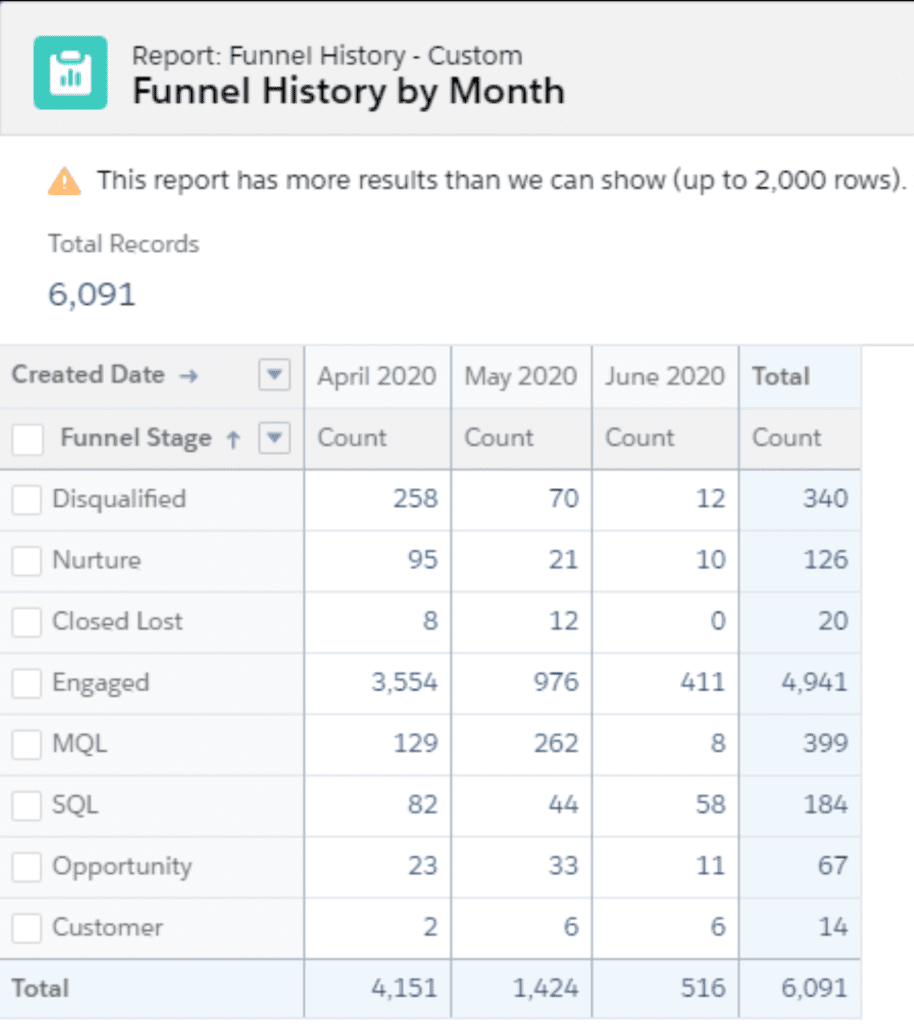

2. Current Funnel Inventory by Stage
AKA “How many people are currently in an MQL stage or SQL stage?” This helps you:
- Identify leads that are getting stuck in various stages
- Ensure BDRs are following up with every active MQLs
- Check if SALs have converted to an opportunity yet
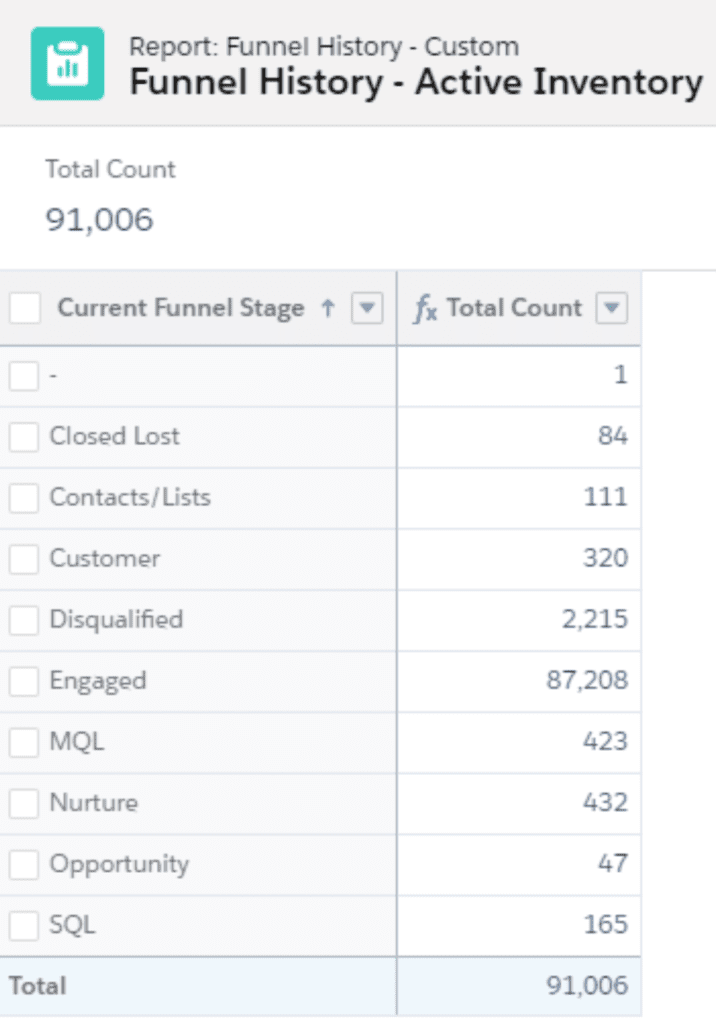

3. Funnel Conversion Report
AKA “How many / how quickly did MQLs convert to other stages?” This helps you see:
- How many MQLs converted to other stages
- How many MQLs moved to SAL/SQL
- And how long were they in MQL stage before they moved to a new stage


4. Campaign Performance Report
AKA “How many MQLs came directly from that Event?” This helps you see how many MQLs, SALs, SQLs, etc. were sourced from each campaign. This report assigns a single source (usually the last campaign response before MQL was created) to each sales cycle.
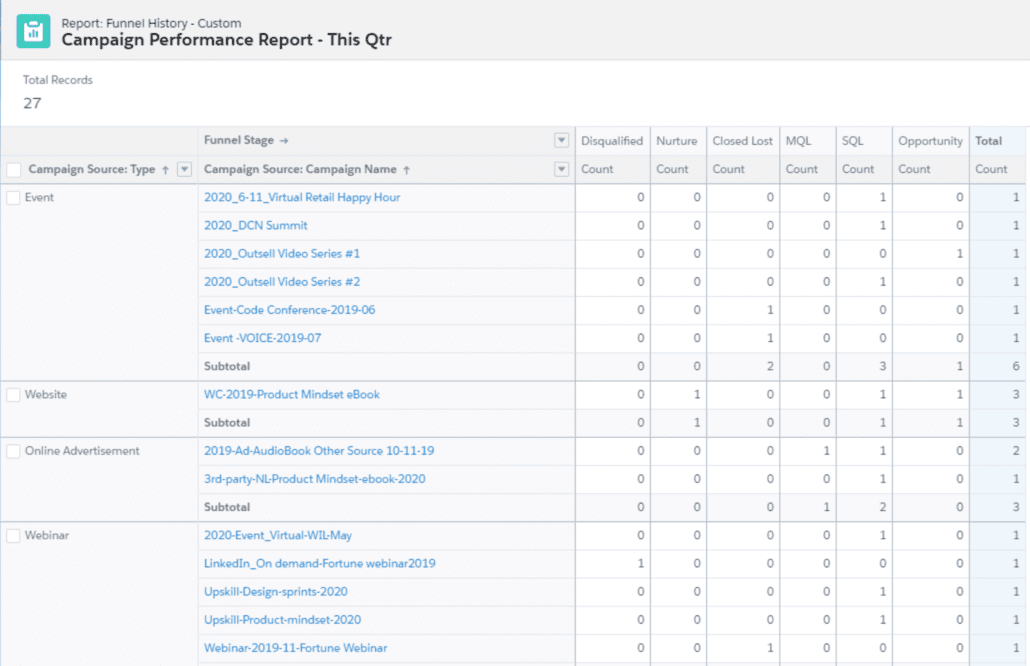

5. Campaign Influence Report
AKA “How many Opps did that Event influence?” This one is retroactive and helps you see how each campaign influenced opportunities/pipeline/revenue. There’s no double counting within campaign type, but there could be opportunities that were influenced by multiple campaigns across different types.
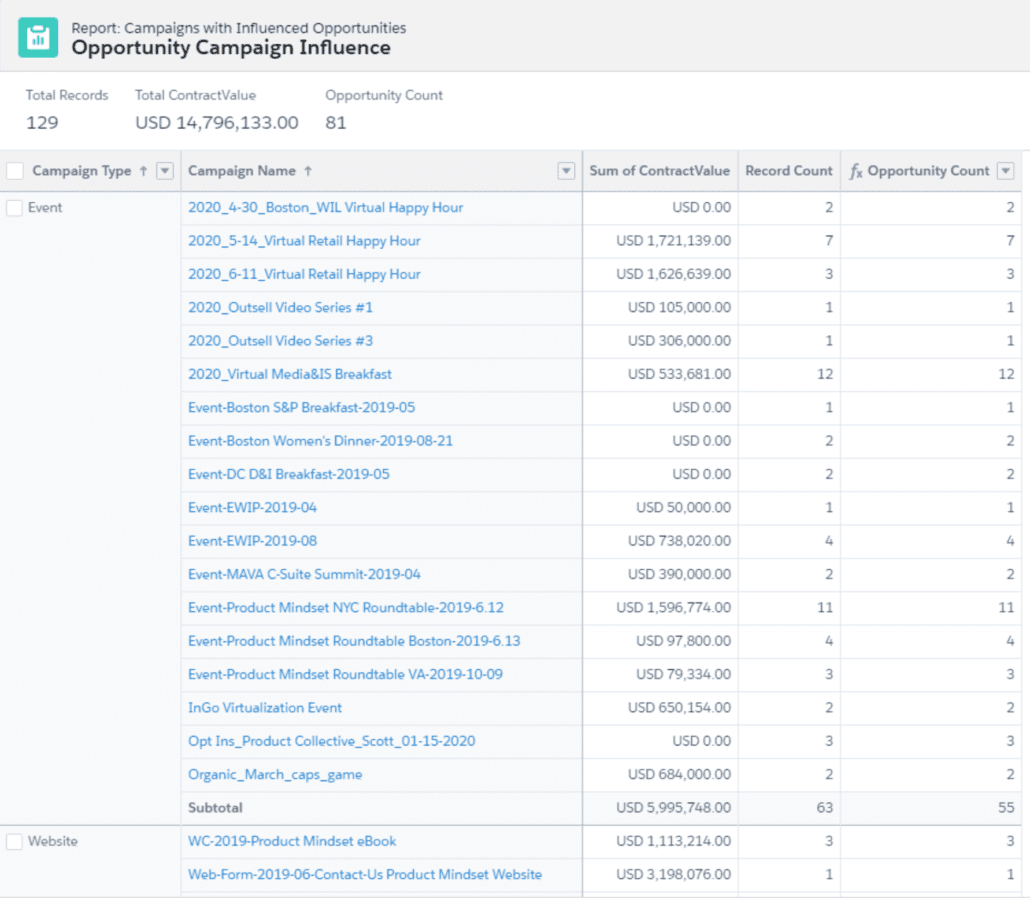

(Psst! This kind of reporting isn’t magic. Make sure your team is really using UTMs correctly. And then pull those parameters into Salesforce.)
FAQs
What is Salesforce funnel history?
The sales funnel, also known as the sales pipeline, represents the different stages that a potential sale goes through, from initial lead or prospect to closed-won or closed-lost.
What’s the difference between campaign sourcing and campaign influencing?
Campaign sourcing refers to attributing the source of a lead or an opportunity to a specific marketing campaign. It answers the question, “Where did this lead or opportunity originate?”
Campaign influencing, on the other hand, involves tracking the various marketing campaigns that have played a role in influencing a lead or opportunity throughout its lifecycle. It answers the question, “Which marketing campaigns contributed to the conversion or progression of this lead/opportunity?”





